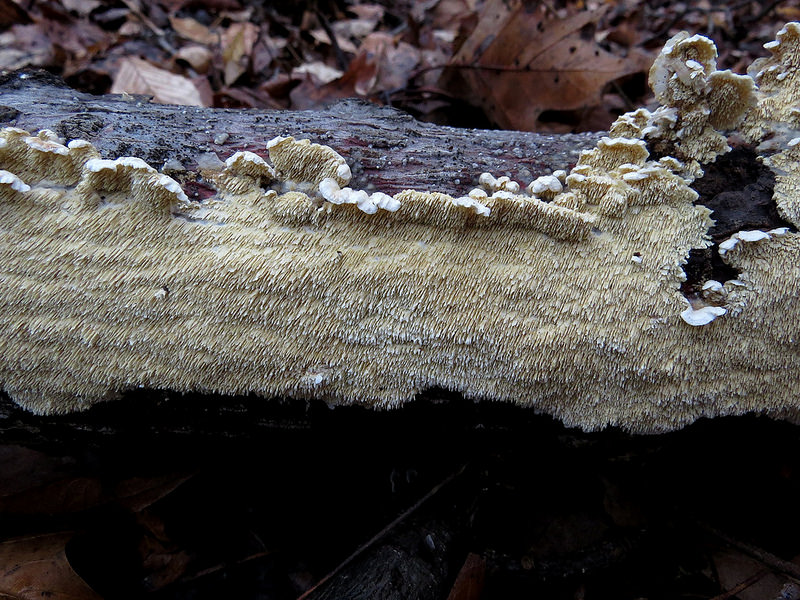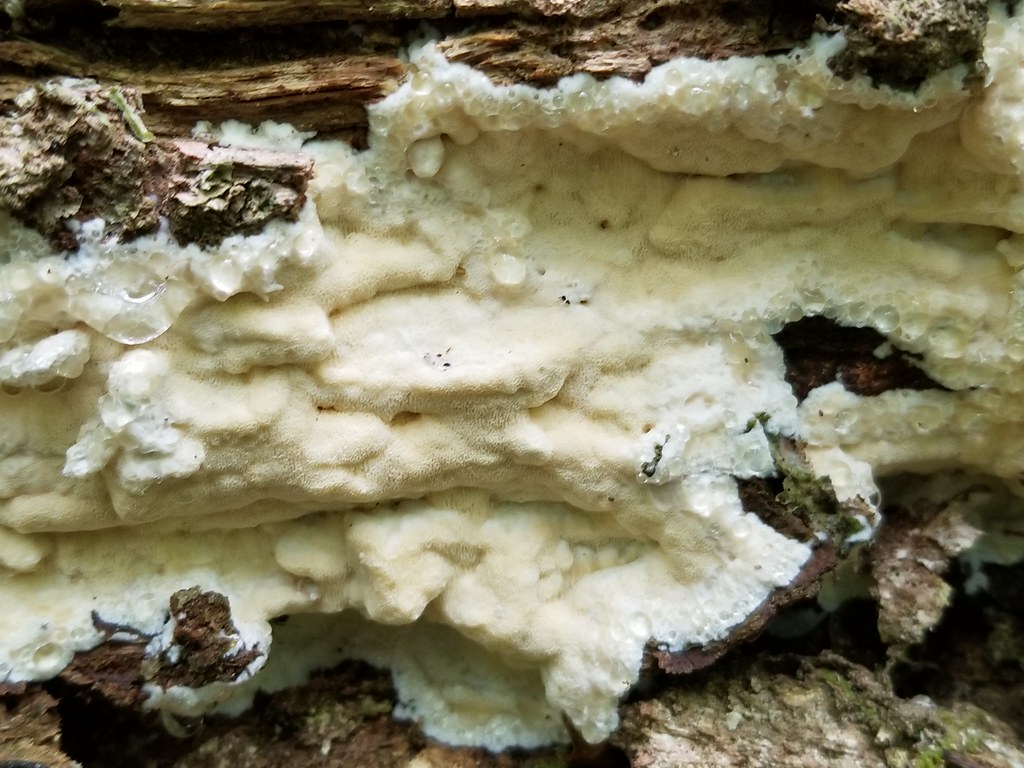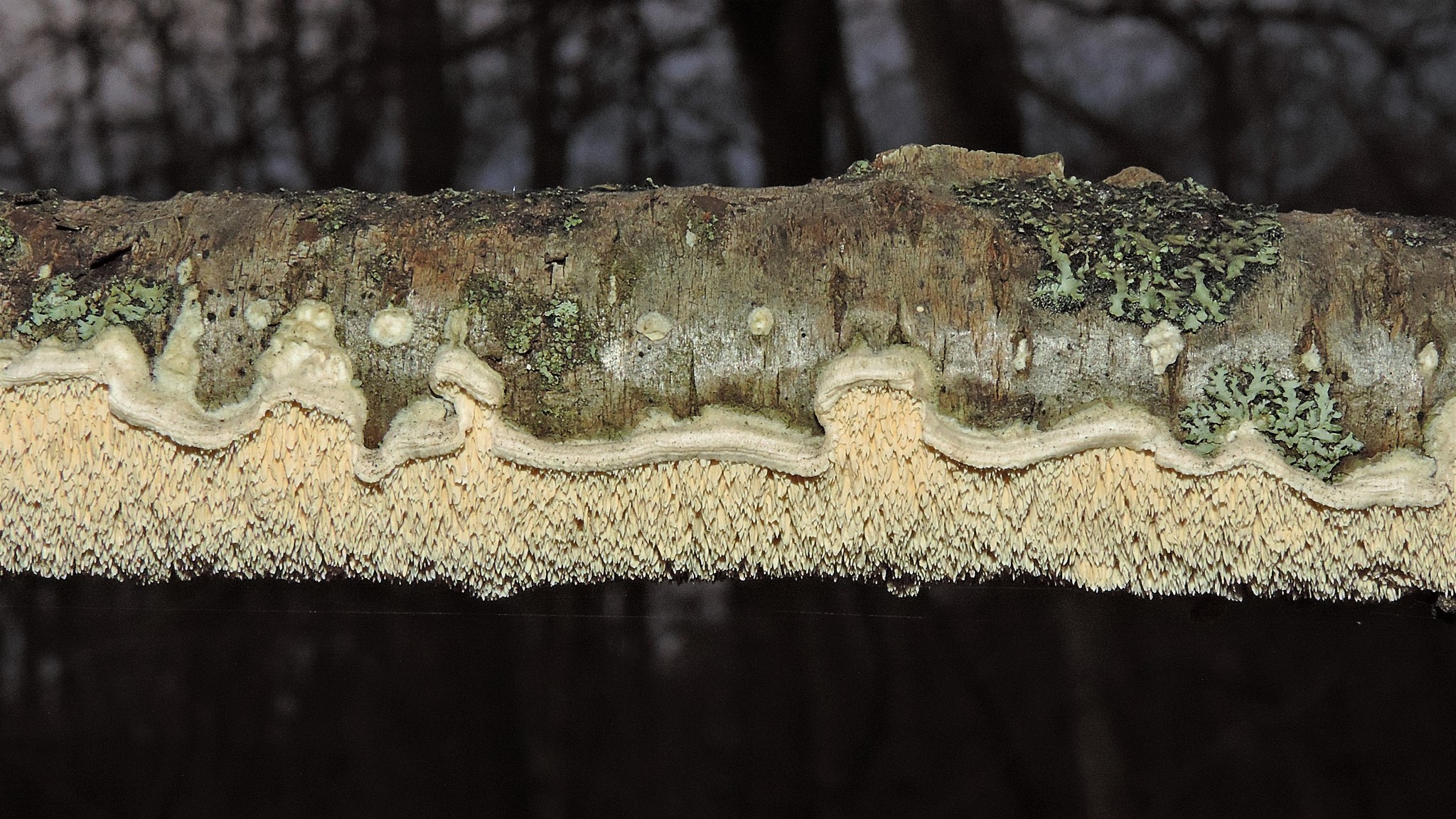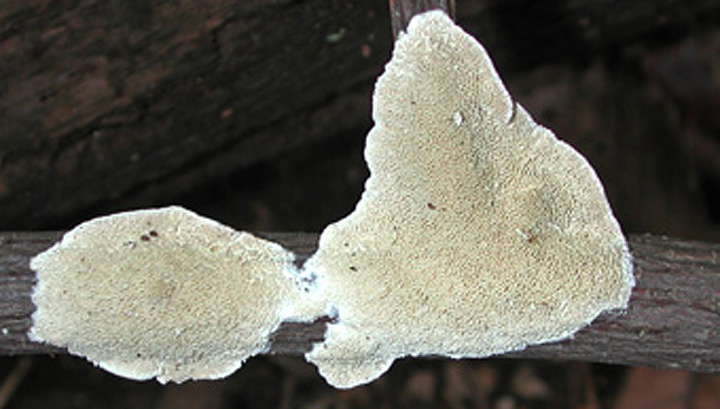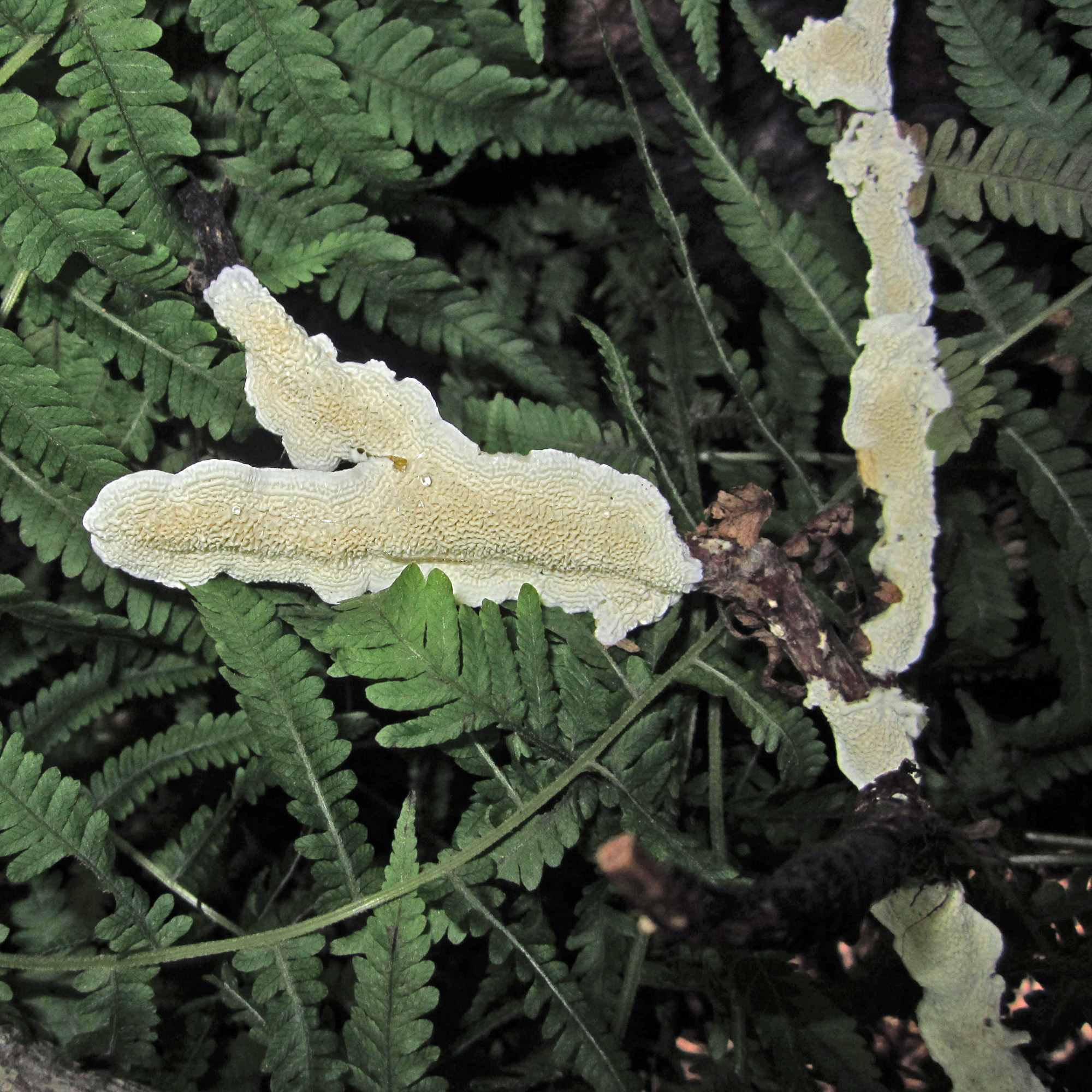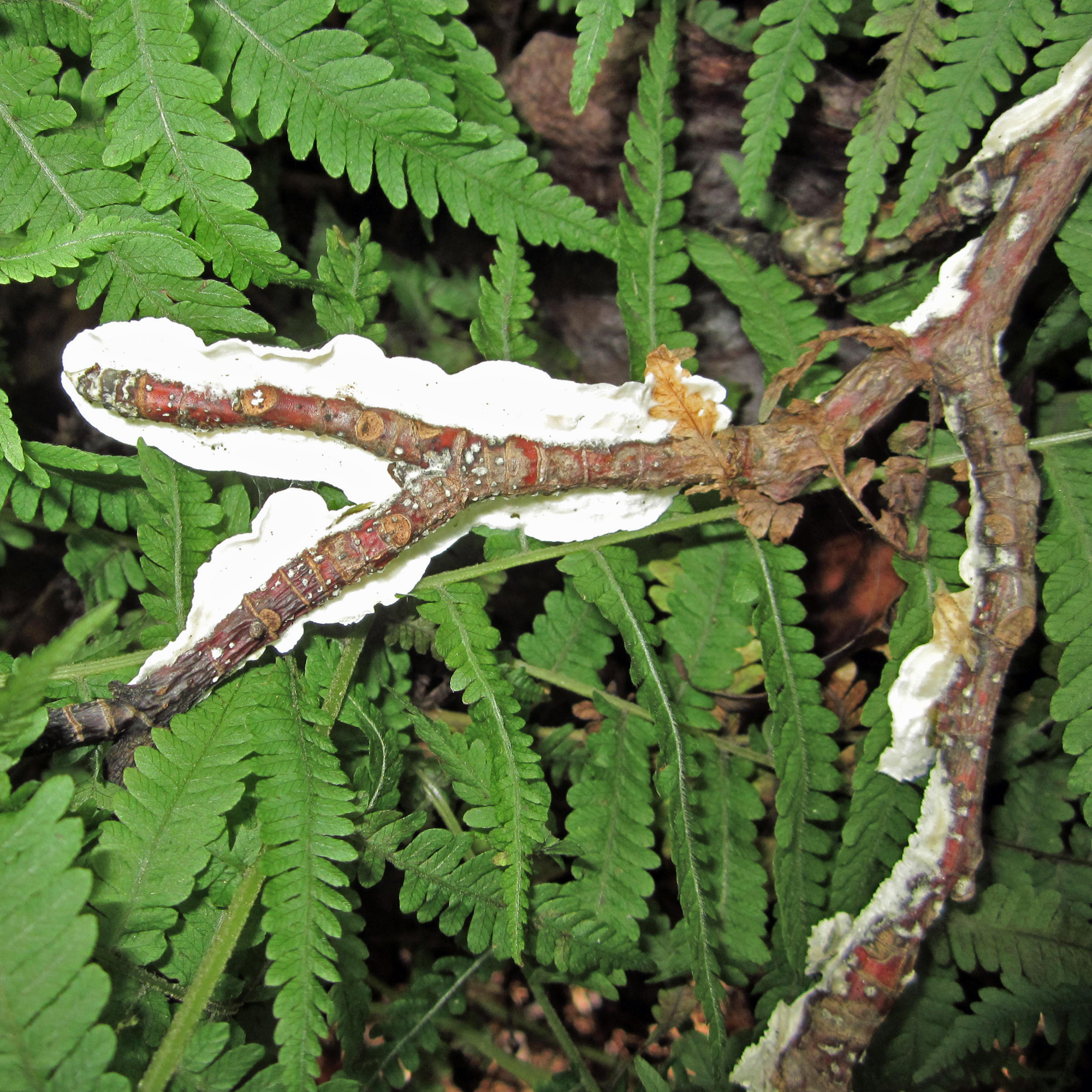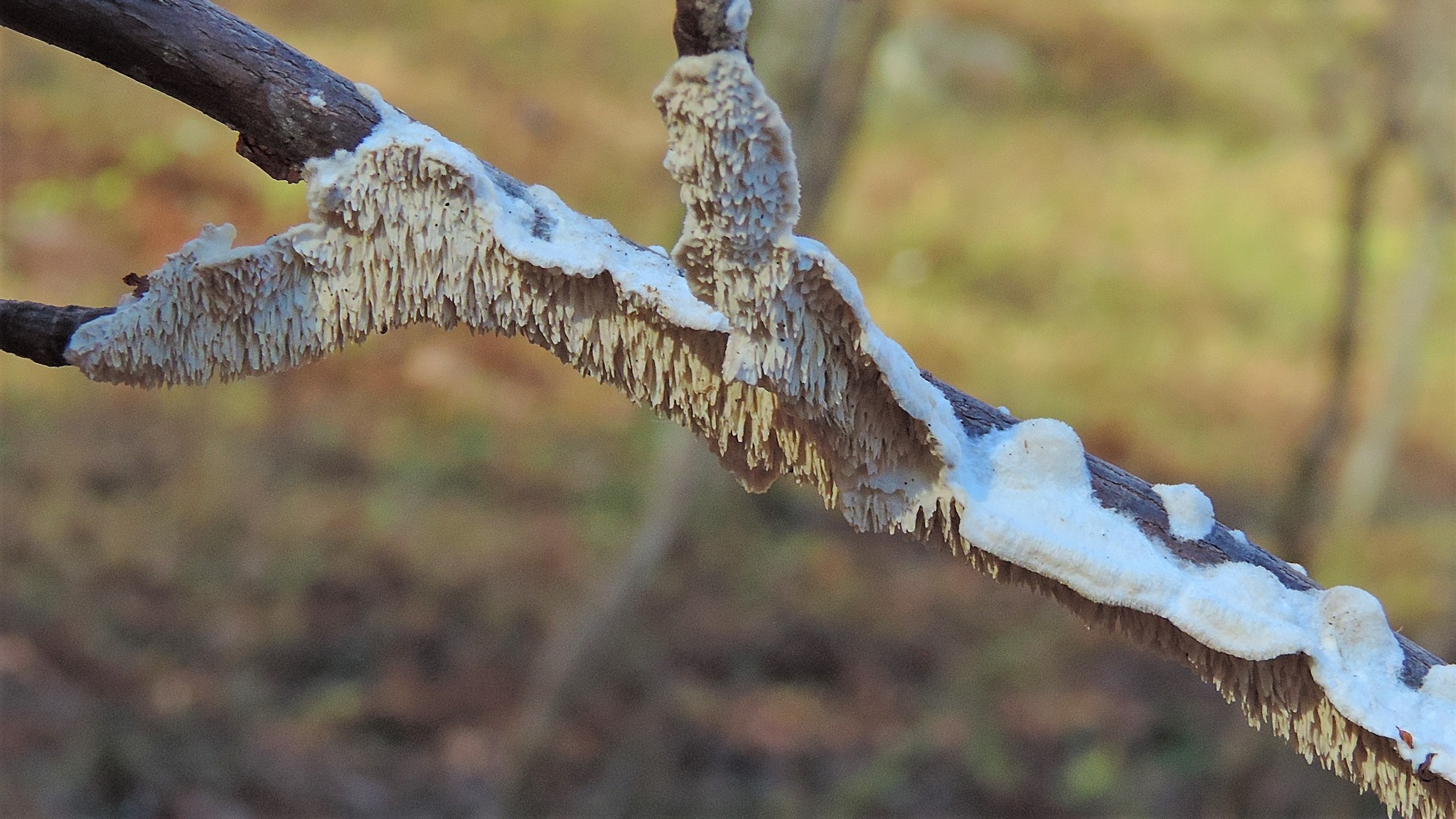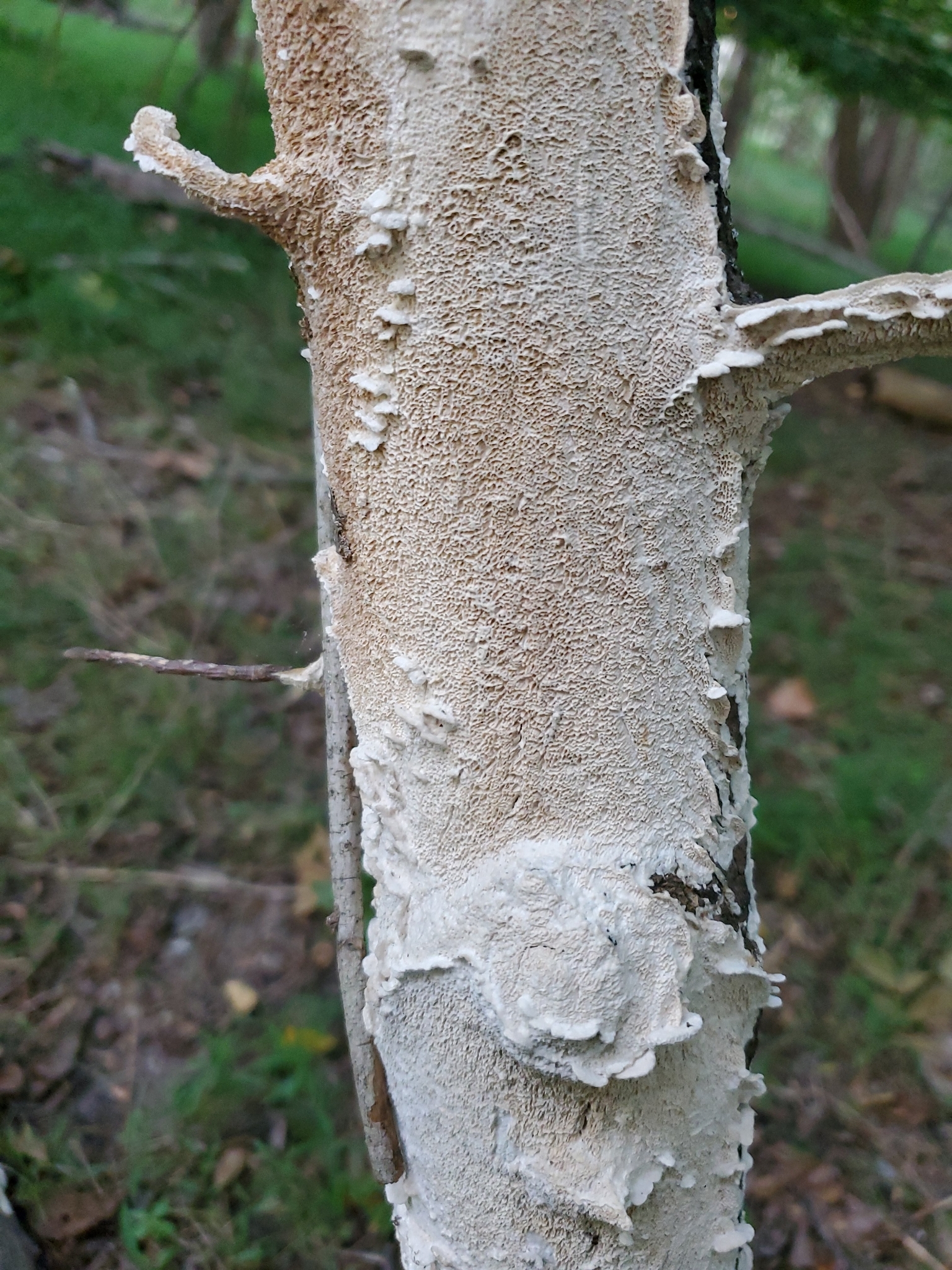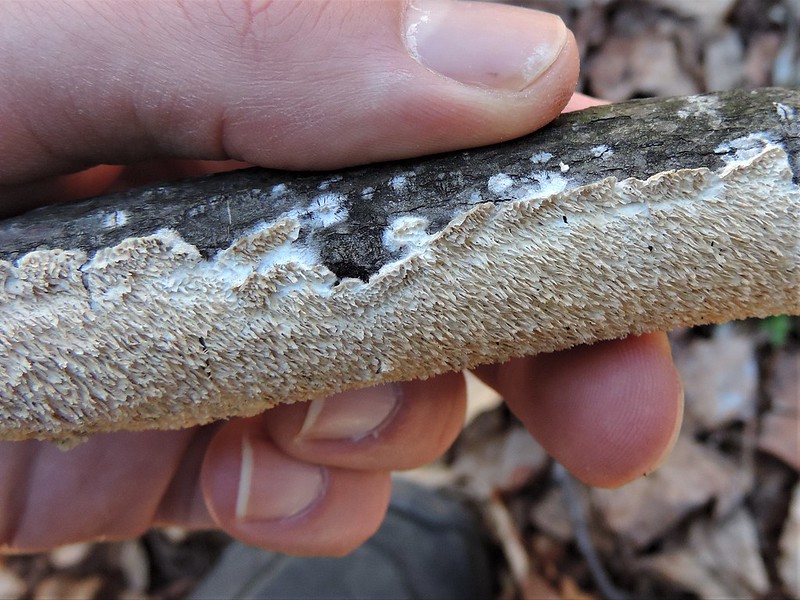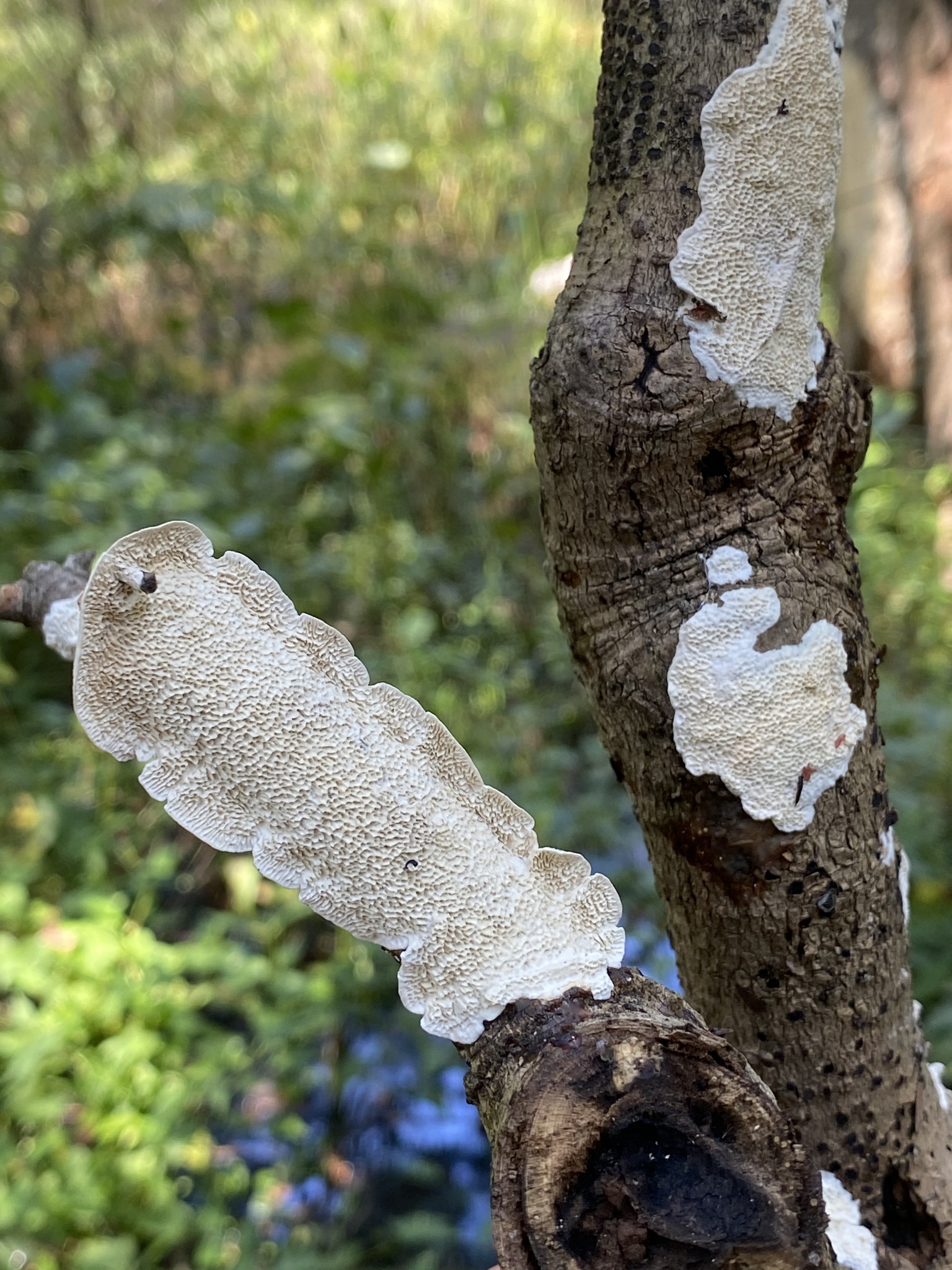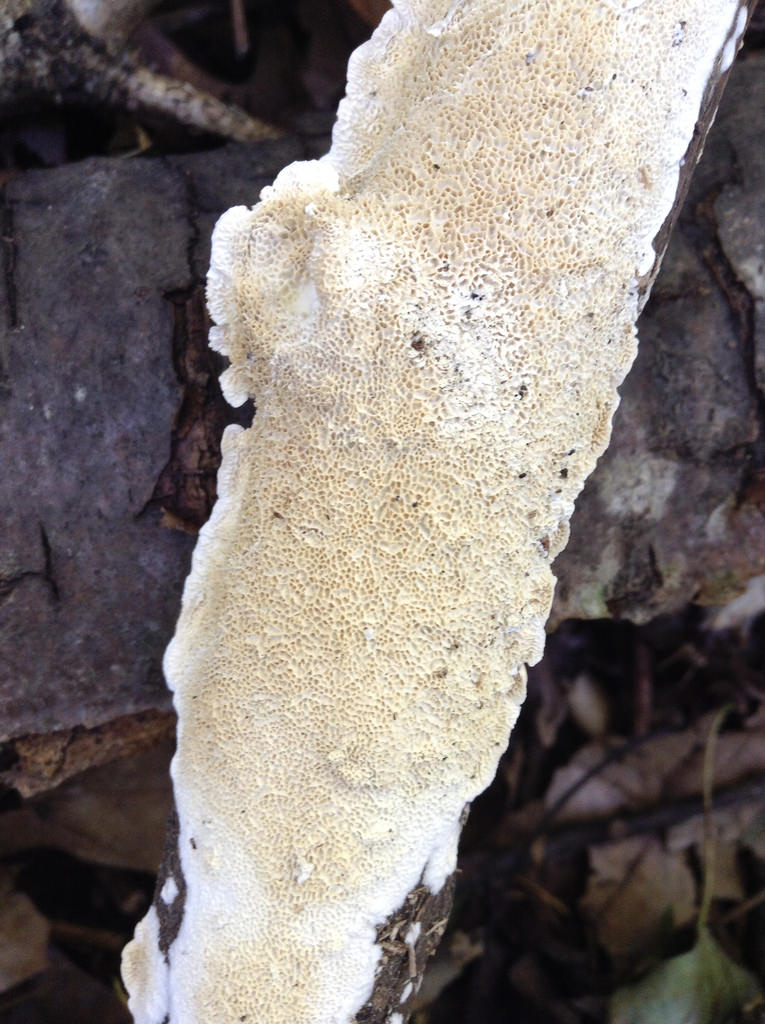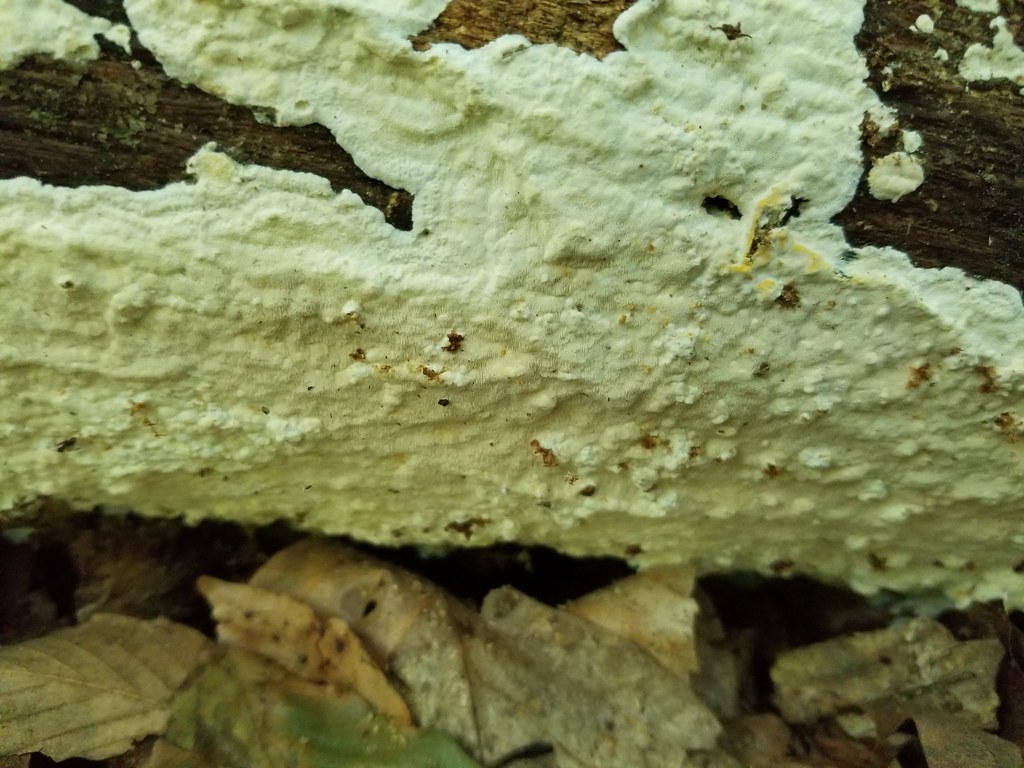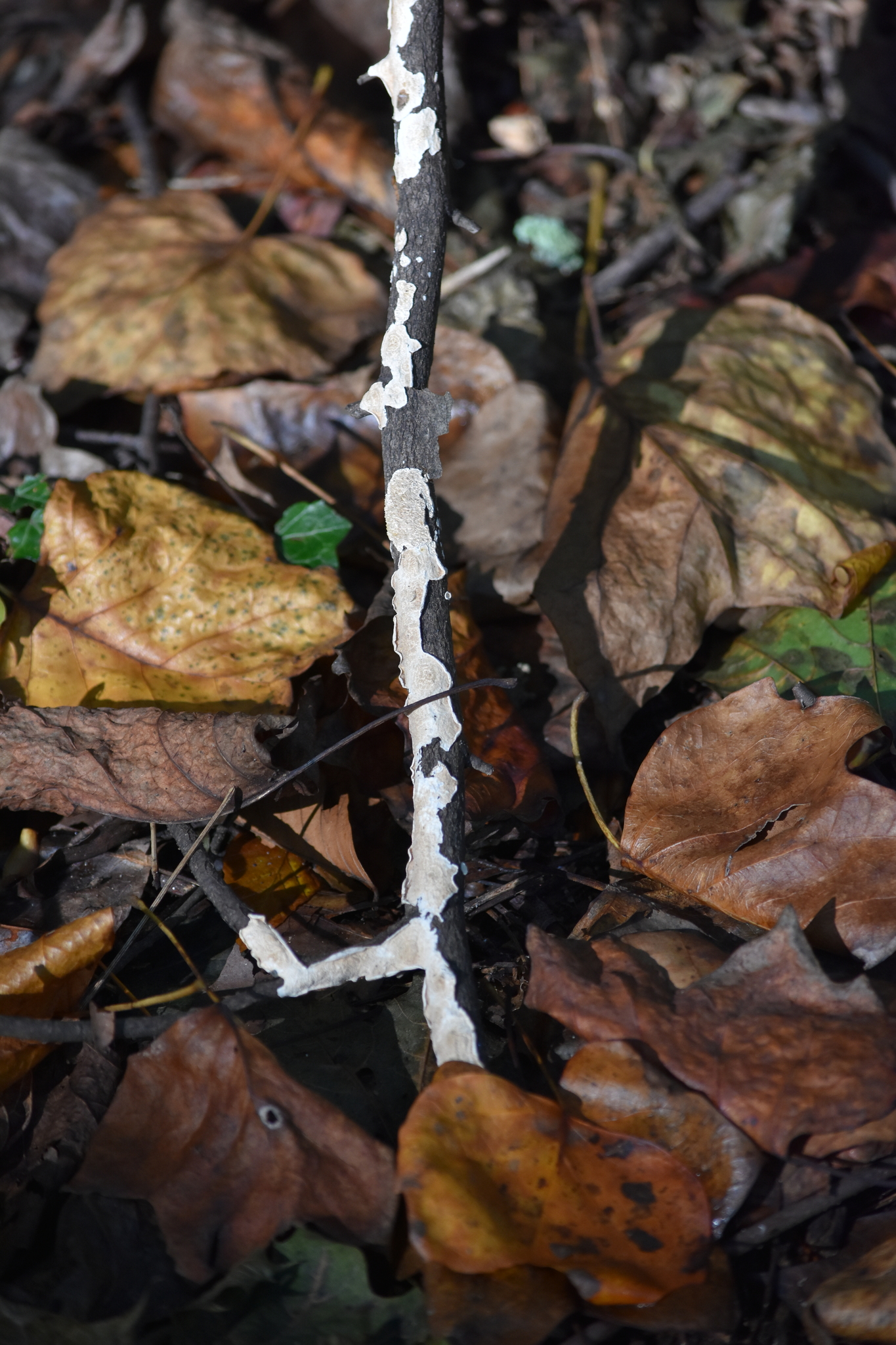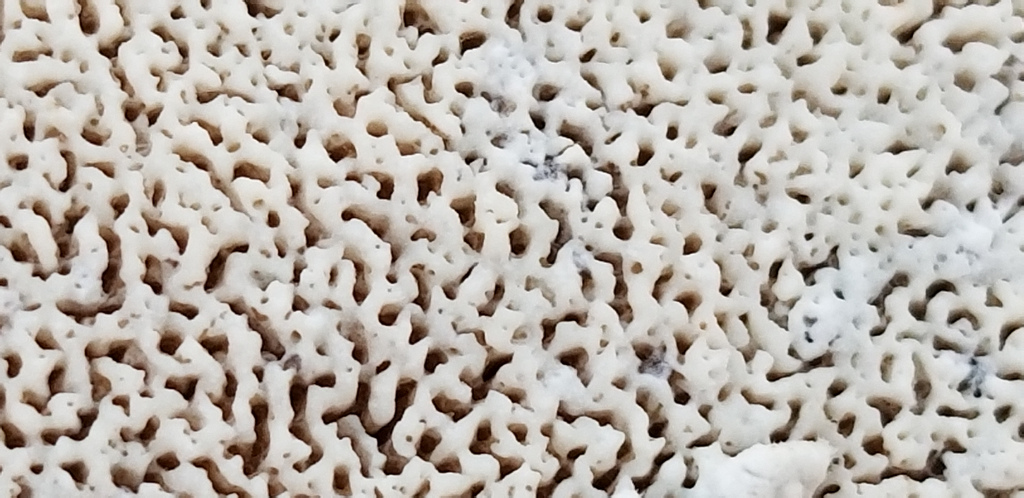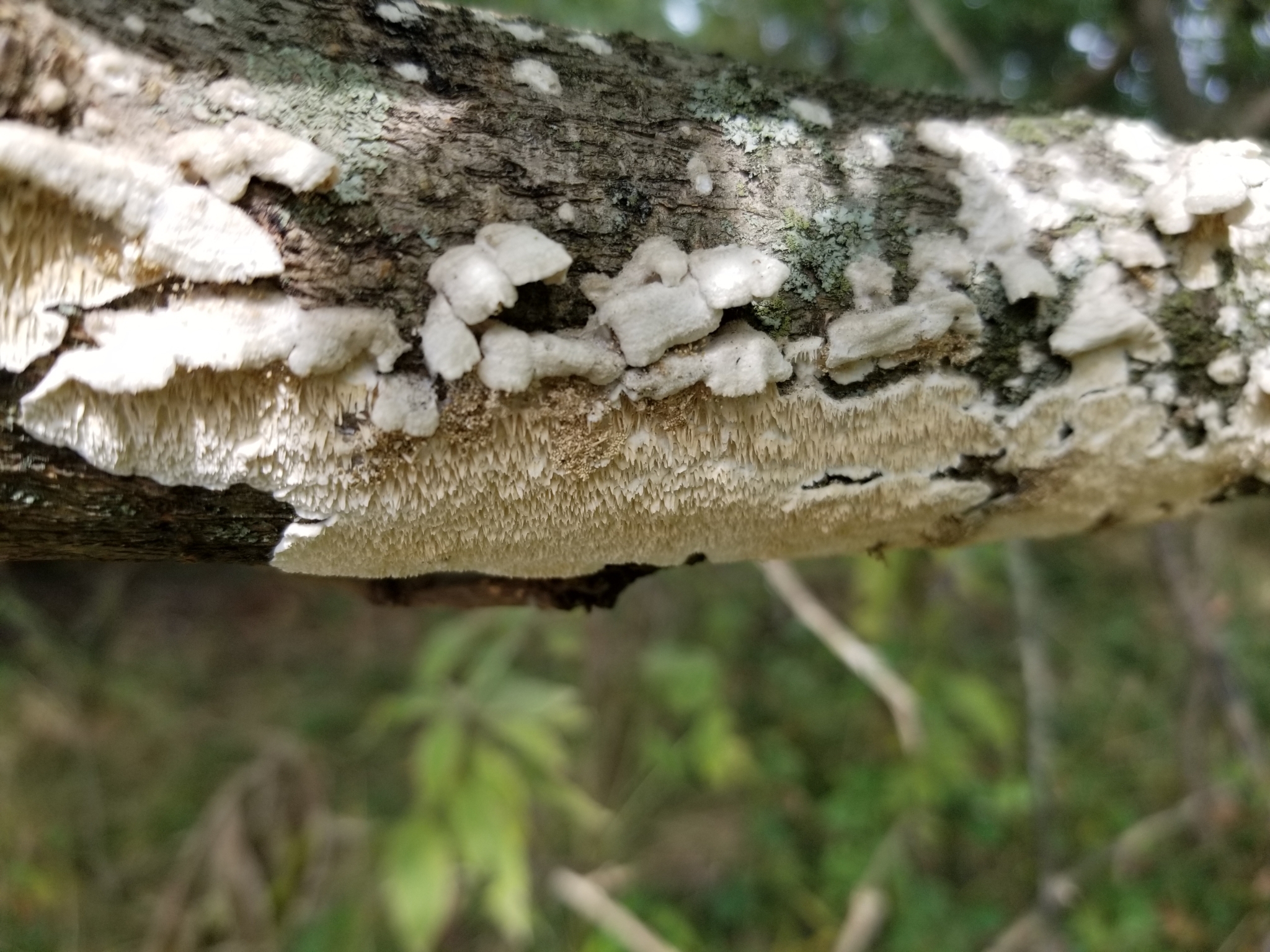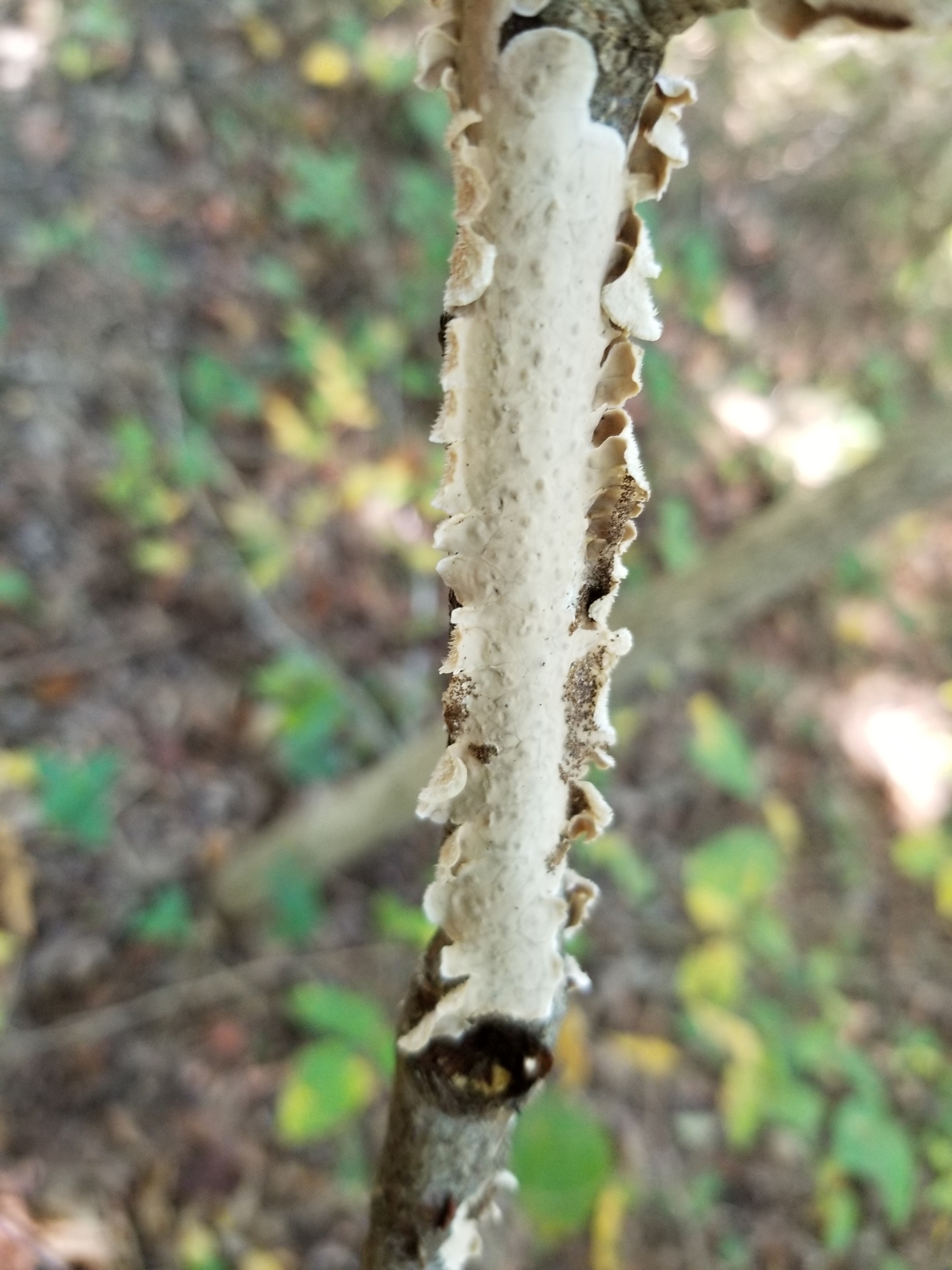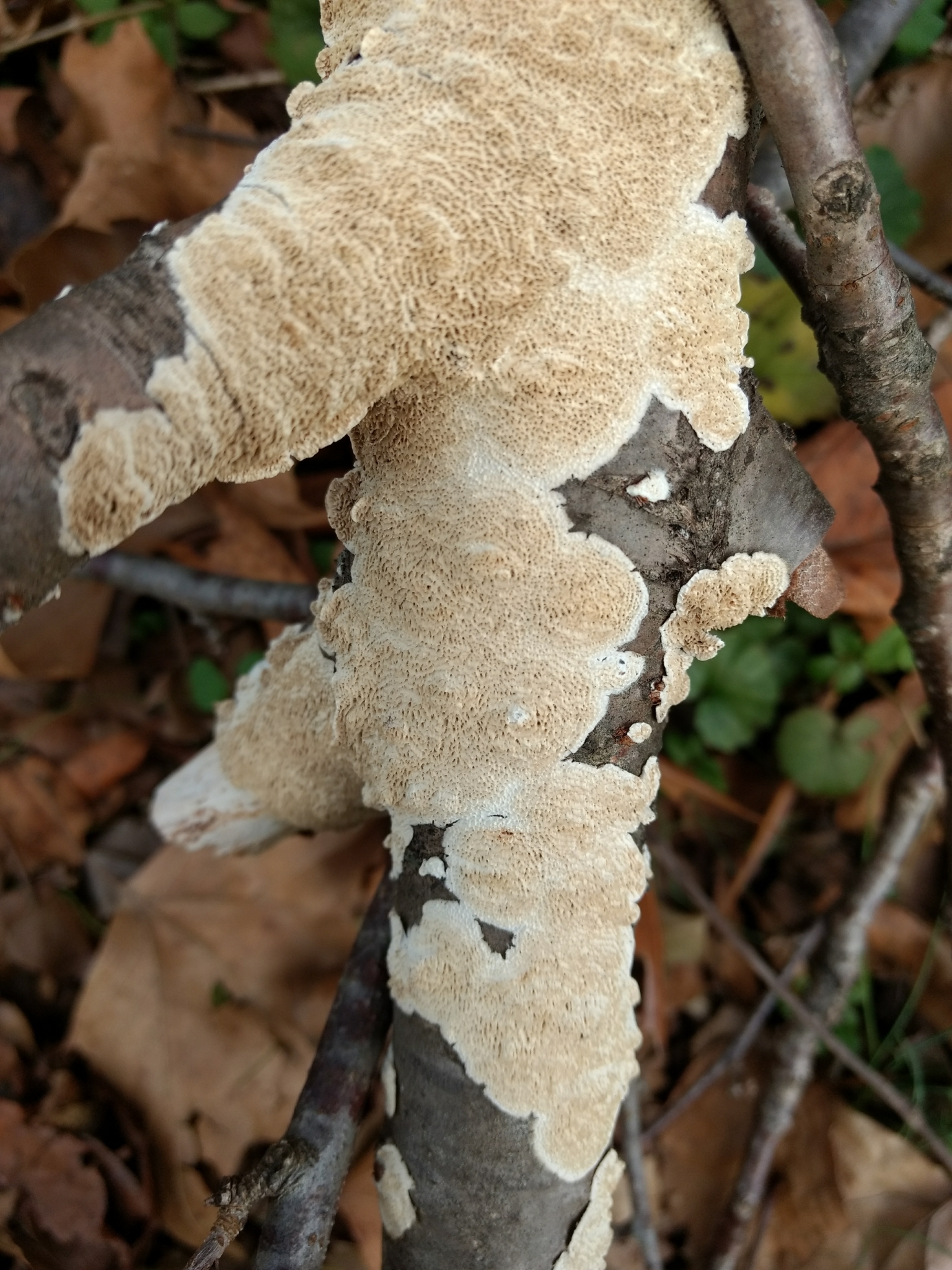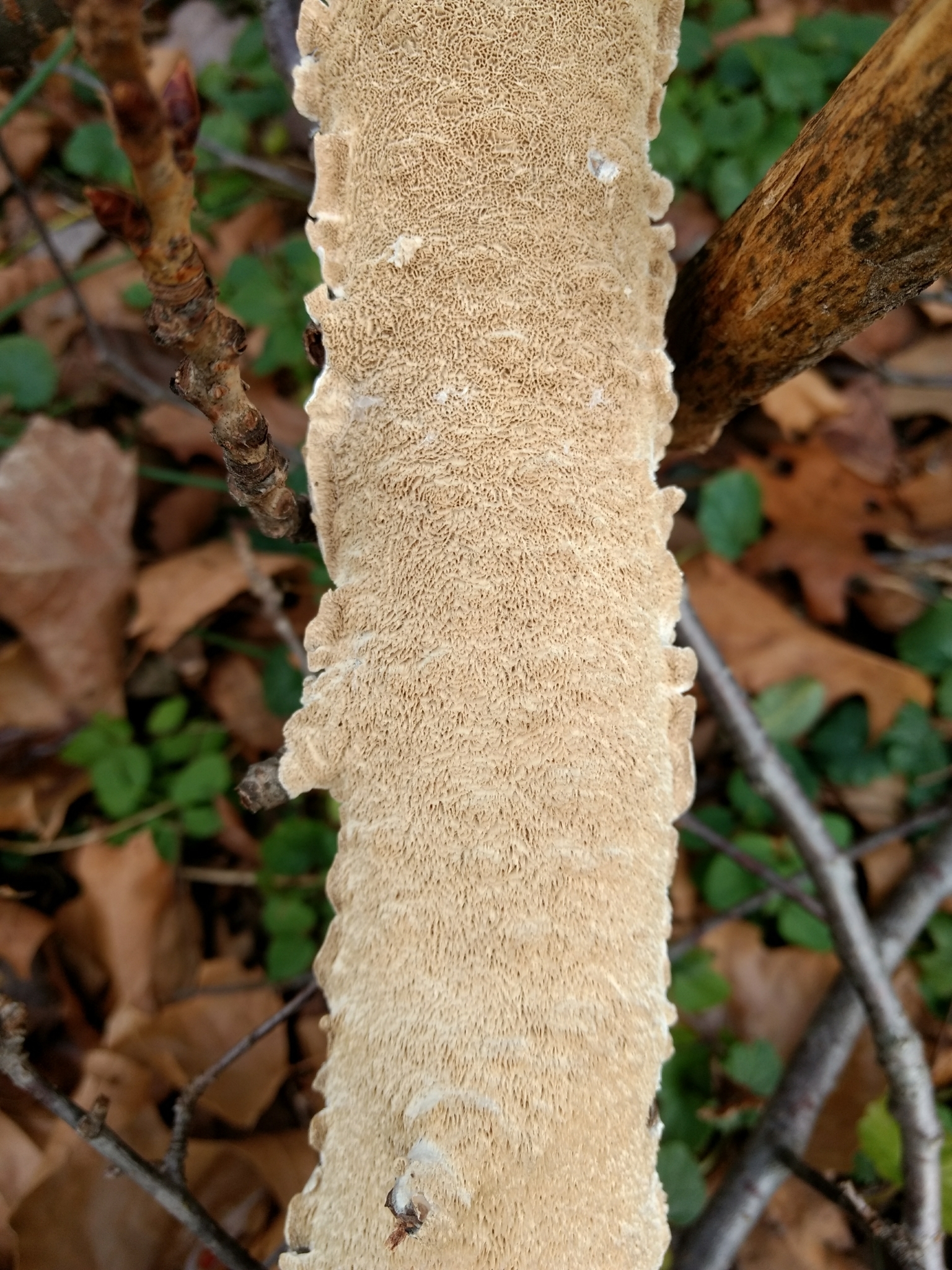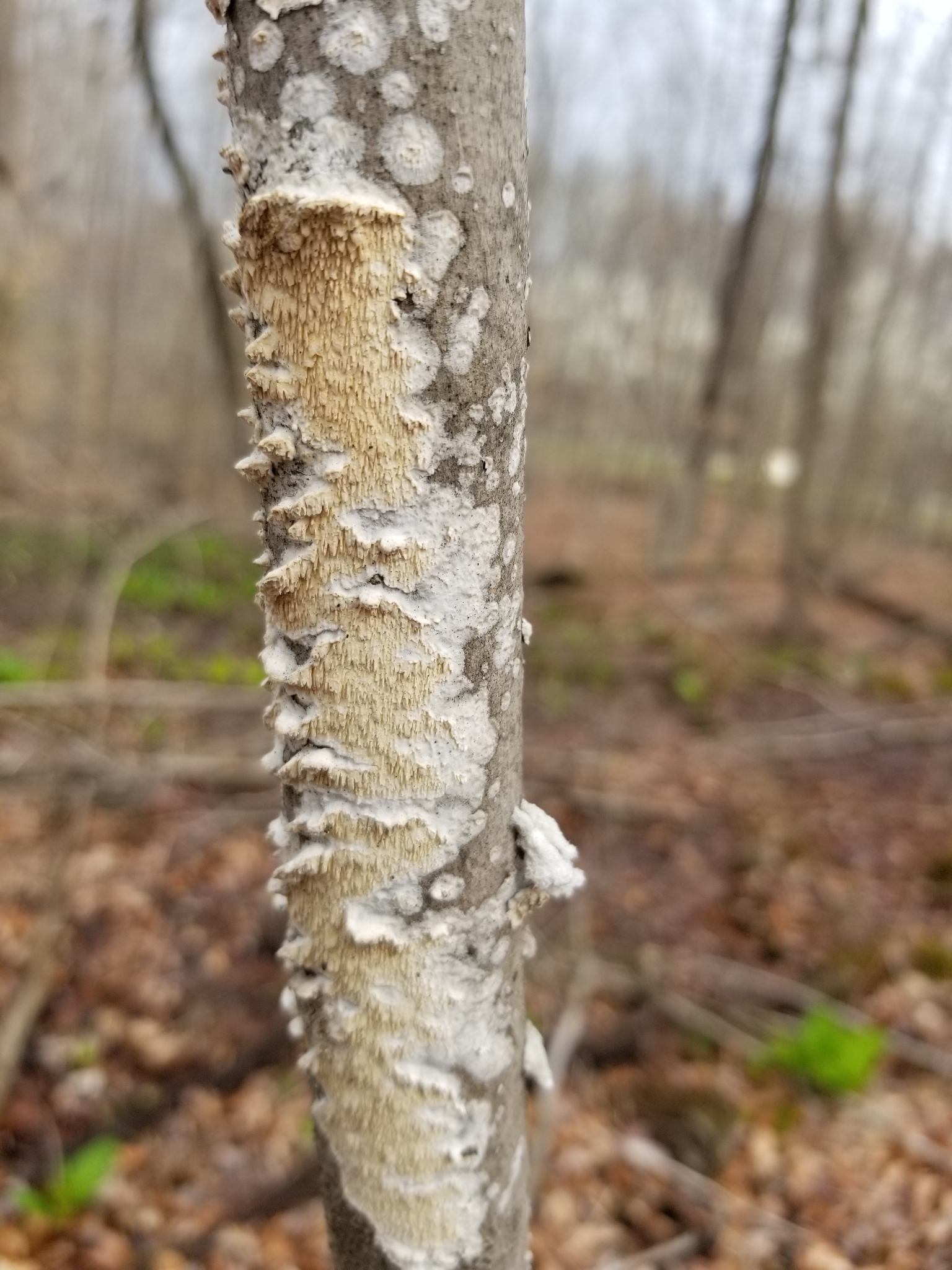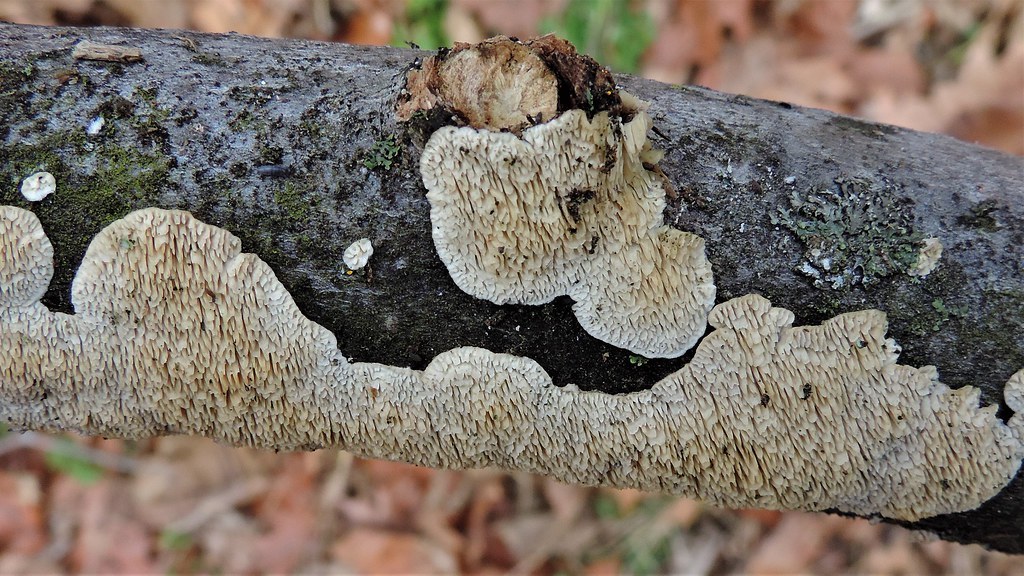Map Snapshot






















386 Records
Description
Beware look-alike species, some of which are not readily identifiable. This species may become gray/dirty white/tan in old age, but never dark brown. The fertile surface may become weathered, but probably doesn't break up into wide, broken-toothed projections. (J. & R. Solem, pers. comm.)
Seasonality Snapshot
Source: Wikipedia
| Irpex lacteus | |
|---|---|

| |
| Scientific classification | |
| Domain: | Eukaryota |
| Kingdom: | Fungi |
| Division: | Basidiomycota |
| Class: | Agaricomycetes |
| Order: | Polyporales |
| Family: | Irpicaceae |
| Genus: | Irpex |
| Species: | I. lacteus
|
| Binomial name | |
| Irpex lacteus (Fr.) Fr. (1828)
| |
Irpex lacteus is a common crust fungus distributed throughout temperate areas of the world. It is the type of the genus Irpex. Irpex lacteus is considered a polypore, but depending on growth conditions it can also produce a hydnoid hymenophore. Due to this variability and abundance of the species it has been described as a new species to science numerous times and subsequently has an extensive synonymy. The complete genome sequence of Irpex lacteus was reported in 2017.[1]
Irpex lacteus is a white-rot fungus that inhabits mainly angiosperm branches and trunks.[2] It is one of the most common wood-rotting fungi for instance in urban North America. It is inedible.[3] The fungus has been identified as a cause of pulmonary infections in immuno-compromised humans.[4]

Taxonomy
[edit]The fungus was first described in 1818 by Elias Magnus Fries, who called it Sistotrema lacteum.[5] Fries later made it the type species of the genus Irpex in 1828.[6]
Synonyms
[edit]- Boletus cinerascens Schwein. (1822)
- Boletus tulipiferae Schwein. (1822)
- Coriolus lacteus (Fr.) Pat. (1900)
- Coriolus tulipiferae (Schwein.) Pat. (1900)
- Daedalea diabolica Speg. (1889)
- Hirschioporus lacteus (Fr.) Teng (1963)
| Irpex lacteus | |
|---|---|
| Hymenium attachment is not applicable | |
| Lacks a stipe | |
| Ecology is saprotrophic | |
| Edibility is inedible | |
- Hydnum lacteum (Fr.) Fr. (1823)
- Irpex bresadolae Schulzer (1885)
- Irpex diabolicus (Speg.) Bres. (1919)
- Irpex hirsutus Kalchbr. (1878)
- Irpex lacteus f. sinuosus (Fr.) Nikol. (1953)
- Irpex pallescens Fr. (1838)
- Irpex sinuosus Fr. (1828)
- Irpiciporus lacteus (Fr.) Murrill (1907)
- Irpiciporus tulipiferae (Schwein.) Murrill (1905)
- Microporus chartaceus (Berk. & M.A.Curtis) Kuntze, (1898)
- Microporus cinerascens (Schwein.) Kuntze (1898)
- Polyporus chartaceus Berk. & M.A.Curtis (1849)
- Polyporus tulipiferae (Schwein.) Overh. [as 'tulipiferus'], (1915)
- Polystictus bresadolae (Schulzer) Sacc. (1888)
- Polystictus chartaceus (Berk. & M.A.Curtis) Cooke, (1886)
- Polystictus cinerascens (Schwein.) Cooke (1886)
- Polystictus cinerescens (Schwein.) Cooke
- Polystictus tulipiferae (Schwein.) Cooke (1886)
- Poria cincinnati Berk. ex Cooke, (1886)
- Poria tulipiferae (Schwein.) Cooke, (1888)
- Sistotrema lacteum Fr. (1818)
- Steccherinum lacteum (Fr.) Krieglst. (1999)
- Trametes lactea (Fr.) Pilát (1940)
- Xylodon bresadolae (Schulzer) Kuntze (1898)
- Xylodon hirsutus (Kalchbr.) Kuntze (1898)
- Xylodon lacteus (Fr.) Kuntze (1898)
- Xylodon pallescens (Fr.) Kuntze (1898)
- Xylodon sinuosus (Fr.) Kuntze (1898)
References
[edit]- ^ Yao, Mengwei; Li, Wenman; Duan, Zihong; Zhang, Yinliang; Jia, Rong (2017). "Genome sequence of the white-rot fungus Irpex lacteus F17, a type strain of lignin degrader fungus". Standards in Genomic Sciences. 12 (8): 400–3. doi:10.1186/s40793-017-0267-x. PMC 5596461. PMID 5596461.
- ^ Gilbertson RL, Ryvarden L (1986) North American polypores 1, Abortiporus to Lindtneria. Oslo, Fungiflora.
- ^ Phillips, Roger (2010). Mushrooms and Other Fungi of North America. Buffalo, NY: Firefly Books. p. 324. ISBN 978-1-55407-651-2.
- ^ Multiple (2005). "The Polypore Mushroom Irpex lacteus, a New Causative Agent of Fungal Infections". Journal of Clinical Microbiology. 43 (4). American Society for Microbiology: 2009–2011. doi:10.1128/JCM.43.4.2009-2011.2005. PMC 1081321. PMID 15815046.
- ^ Fries, E.M. (1818). Observationes mycologicae (in Latin). Vol. 2. p. 266.
- ^ Fries, E.M. (1828). Elenchus Fungorum (in Latin). Vol. 1. p. 145.

